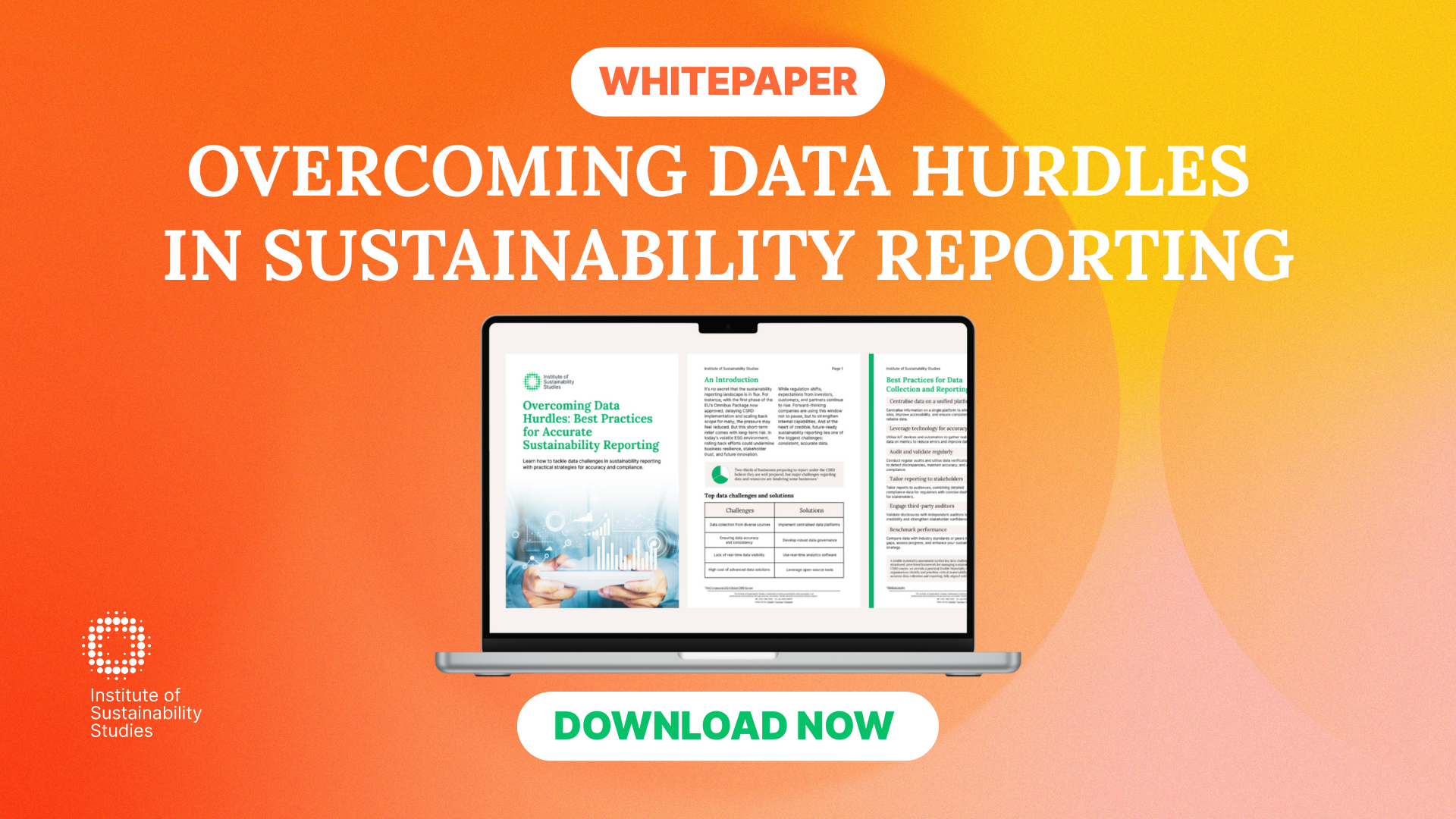As Artificial Intelligence (AI) continues to evolve, its role in shaping a sustainable future is increasingly under scrutiny. On one hand, AI’s vast computational demands raise concerns about its environmental impact, particularly in terms of energy consumption and e-waste.
On the other hand, AI holds significant promise as a tool for addressing some of the most pressing challenges of our time, including climate change. This paradox leads to a fundamental question: is AI a threat to business sustainability, or can it be a catalyst for positive change? Keep reading to explore AI’s environmental footprint and how we can balance its risks and benefits.
Explore AI’s environmental footprint
One of the main contributors to AI’s footprint is the substantial amount of energy required to train and operate AI models, especially those using deep learning. Training large models demands vast amounts of computational power, which, in turn, consumes significant amounts of electricity. This process often takes weeks or months, leading to considerable energy usage. Data centres, where AI models are trained and run, play a key role in this energy consumption.
These facilities house thousands of servers that must be powered and cooled constantly to ensure smooth operation. Moreover, these data centres are typically located in regions that rely heavily on fossil fuels for electricity. Depending on the energy mix of the location, the carbon emissions generated by AI systems can be substantial. This only adds to the global challenge of reducing greenhouse gases. One estimate suggests that a single large AI model can emit over 626,000 pounds of carbon dioxide equivalent.
This is comparable to the lifetime emissions of an average car. The hardware required to develop and run AI systems is also problematic. Specialised hardware essential for AI computations is energy-intensive to manufacture and involves harmful mining practices. Finally, as AI technology advances, older hardware becomes obsolete, leading to more e-waste. If not correctly recycled, this e-waste can result in toxic materials leaching into soil and waterways.
5 ways AI can support climate change mitigation
Although AI can be a risk for sustainability, it can also be leveraged to contribute to various climate solutions across multiple sectors. Below are five ways AI can support climate change mitigation.
1. Optimising energy use
Whilst AI has a considerable energy footprint, it has capabilities to improve energy efficiency in buildings, transportation, and industrial processes. It achieves this by helping smart grids manage energy distribution more efficiently and balancing supply and demand to reduce waste.
In smart cities, AI-powered systems optimise energy usage across urban infrastructure by adjusting heating, cooling, and lighting based on real-time data from Internet of Things (IoT) sensors. This not only reduces energy consumption but also enhances urban efficiency and quality of life. Additionally, in manufacturing, AI can optimise production processes to curb energy use and minimise emissions.
2. Supporting the transition to renewable energy
AI can also accelerate the shift to renewable energy by improving the management and integration of variable energy sources like wind and solar. It can achieve this by predicting energy generation based on weather patterns and adjusting supply accordingly.
This helps AI optimise the use of renewable energy and stabilise electricity grids. Additionally, AI can further optimise battery storage systems, enabling better energy management and reducing the need for fossil fuel backup power.
3. Enhancing climate modelling and prediction
One of the most critical applications of AI in climate change mitigation that has been highlighted is its ability to improve climate models. AI is able to analyse vast amounts of climate data at a much quicker rate than traditional methods. It is also argued to be more accurate, allowing for more precise predictions about the effects of climate change.
This improved forecasting helps policymakers and scientists make more informed decisions about how to prepare for and mitigate the impacts of rising temperatures, extreme weather events, and sea-level rise.
4. Monitoring deforestation and biodiversity
AI-powered satellite monitoring systems can track deforestation and biodiversity loss in real-time, helping conservationists and governments identify areas at risk and take action to protect ecosystems. AI can also analyse the impact of deforestation on carbon sequestration, helping develop strategies to preserve forests and other carbon sinks.
5. Facilitating carbon capture and sequestration
AI can optimise the design and operation of Carbon Capture and Storage (CCS) technologies. By analysing geological data, AI can help identify optimal sites for storing captured carbon dioxide and improve the efficiency of carbon capture systems in industrial processes.
How to balance the benefits and risks of AI
Balancing the benefits and risks of AI for a sustainable future involves careful development, regulation, and collaboration. Energy efficiency is key in AI development, as large models consume significant energy. Prioritising energy-efficient algorithms and hardware, and using renewable energy sources, helps mitigate environmental impacts. AI’s potential to support sustainability in areas like energy management and climate modelling should be harnessed to ensure its positive contribution.
Furthermore, strong governance frameworks are needed to address risks like bias and privacy issues. Collaboration between AI experts, environmental scientists, and policymakers can ensure AI is applied effectively in real-world scenarios. Educating stakeholders on AI’s impacts and continuously monitoring its societal and environmental effects are also essential for ensuring responsible development. These strategies will help balance the power of AI with its potential risks.
Conclusion
The environmental impact of AI is undeniable, with high energy consumption, reliance on fossil-fuel-powered data centres, and the production of e-waste posing serious sustainability concerns. Yet, the potential for AI to support climate change mitigation is equally powerful.
The bottom line is that its capabilities can be harnessed to drive positive environmental outcomes. Striking a balance between managing its footprint and leveraging its benefits requires careful regulation, collaboration across industries, and a commitment to energy-efficient innovation. By adopting such an approach, AI can become a pivotal force in the global effort to combat climate change, while minimising its own environmental cost.
Dedicated to harnessing the power of storytelling to raise awareness, demystify, and drive behavioural change, Bronagh works as the Communications & Content Manager at the Institute of Sustainability Studies. Alongside her work with ISS, Bronagh contributes articles to several news media publications on sustainability and mental health.
- Bronagh Loughlinhttps://instituteofsustainabilitystudies.com/insights/author/bronagh/
- Bronagh Loughlinhttps://instituteofsustainabilitystudies.com/insights/author/bronagh/
- Bronagh Loughlinhttps://instituteofsustainabilitystudies.com/insights/author/bronagh/
- Bronagh Loughlinhttps://instituteofsustainabilitystudies.com/insights/author/bronagh/









